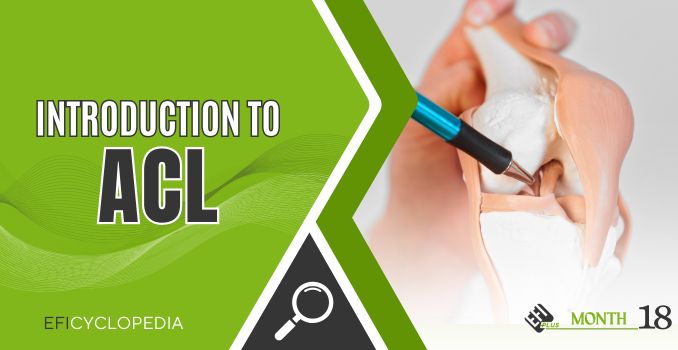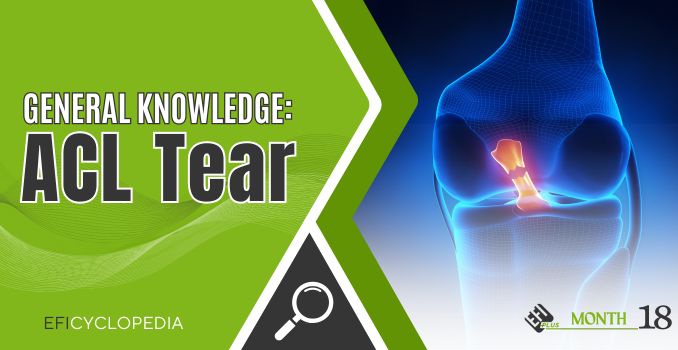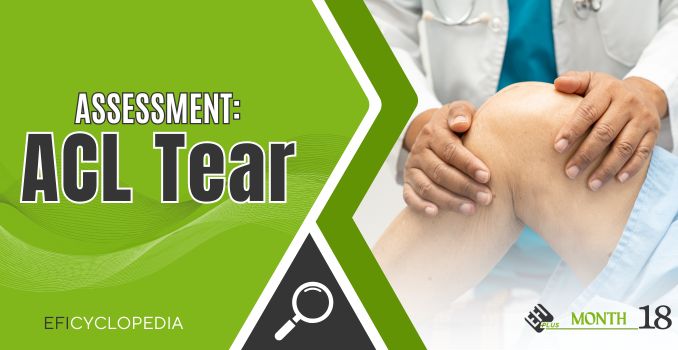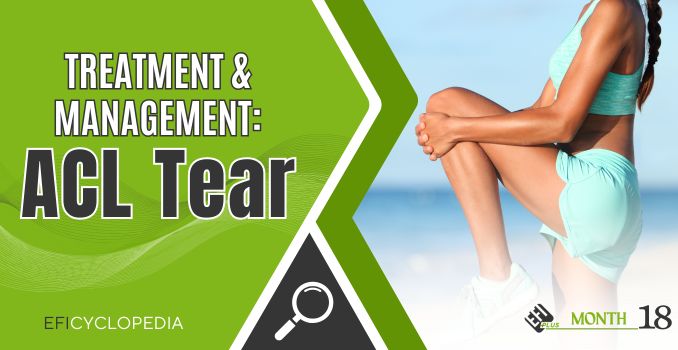Month 18
Ligaments
MONTH 18 OFFER: ACL Tear
Struggling with an ACL tear? Discover powerful techniques this month to restore mobility and improve your overall comfort!
In Month 18 of EFIcyclopedia, we’ll dive into ACL tears, a key injury affecting the stability of your knee. We’ll explain the ligament's role, common symptoms to watch for, and effective treatment options to support your recovery. By the end, you’ll have the tools and knowledge to enhance your recovery process.
WHAT YOU NEED TO KNOW: A clear understanding of the knee's fundamental structures is crucial to comprehending an ACL tear.
- Understanding the Anatomy: An in-depth look at the knee joint and ligaments, including their functions, mechanics, and impact on overall well-being.
- Examining the Root: Explore the various causes of an ACL tear. While this injury is most commonly associated with sports, it can also result from factors such as gender, previous knee injuries, muscle imbalances, and other anatomical considerations.
- Know the Signs: Familiarize yourself with the symptoms of an ACL tear to seek the right treatment without delay.
HOW: Gain the skills to diagnose an ACL tear accurately by taking a comprehensive patient history, conducting physical exams, and using imaging techniques such as X-rays, MRIs, and CT scans to set it apart from other ligament injuries.
WHAT TO DO: Arm yourself with effective strategies to address ACL tear symptoms. Explore multiple treatment options and begin your journey to pain-free living.
- Individualized Management Approach: Tailored exercises designed to strengthen and stretch your knee muscles and joints can enhance stability, flexibility, and overall strength, reducing pain and preventing future injuries.
- Prevention and Management: Improve ligament health and decrease the risk of re-injury by making key changes to your activities, adopting balanced nutrition, and making lifestyle adjustments.
WHY THIS MATTER: When you understand how your knees and ligaments work, you can make empowered, informed decisions that lead to healthier choices for your overall well-being.
- Quality of Life Improvement: An ACL tear can severely impact your everyday life. Recognizing its root causes allows you to take steps that prevent it, improve knee health, and decrease the risk of future injuries.
- Informed Decision-Making: An in-depth knowledge of an ACL tear empowers you to make smart decisions about treatment, activity modifications, and prevention strategies, enabling you to develop a treatment plan that reflects your health objectives.
Begin your path to better health now! Join us for Month 18 of the EFIcyclopedia for detailed content on ACL tear recovery. Start your healing journey today!
Introduction to ACL
The anterior cruciate ligament (ACL) is one of the ligaments in the knee joint. A ligament is a tough, flexible band of tissue that holds bones and cartilage together. The ACL connects the bottom of the thigh bone (femur) to the top of the shinbone (tibia). The ACL helps keep the knee stable.
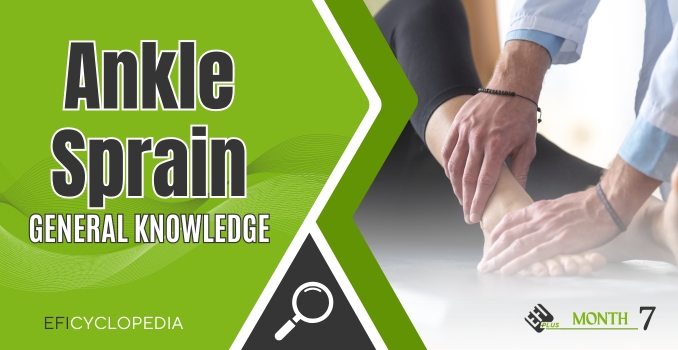
Ankle - General Knowledge
The ankle joint is as vital and versatile as the other structures in human anatomy. Delving into its anatomical complexities, physiological roles, and clinical ramifications is a journey that warrants in-depth exploration. Thoroughly scrutinizing the basic principles and latest developments and comprehending every aspect of this extraordinary joint's anatomy, biomechanics, and functionality enables healthcare providers to accurately evaluate patients and create customized treatment strategies aligned with their unique needs and objectives.
General Knowledge: ACL Tear
The anterior cruciate ligament (ACL) is one of the ligaments in the knee joint. A ligament is a tough, flexible band of tissue that holds bones and cartilage together. The ACL connects the bottom of the thigh bone (femur) to the top of the shinbone (tibia). The ACL helps keep the knee stable.
Assessment: ACL Tear
Assessment of an Anterior Cruciate Ligament (ACL) injury is crucial for an accurate diagnosis and developing an effective treatment plan. ACL injuries typically occur during activities that require sudden stops, changes in direction, or jumping. Understanding the patient’s medical and injury history, including any previous knee problems or trauma, is essential.
Treatment & Management
When you experience an ACL injury, immediate care is crucial to protect your knee and prevent further damage. Swelling control should be your first priority, as excessive swelling can lead to additional stress on the joint and potentially damage other structures, such as the meniscus or cartilage. Here's a more detailed look at how to approach recovery in the early and intermediate stages:

